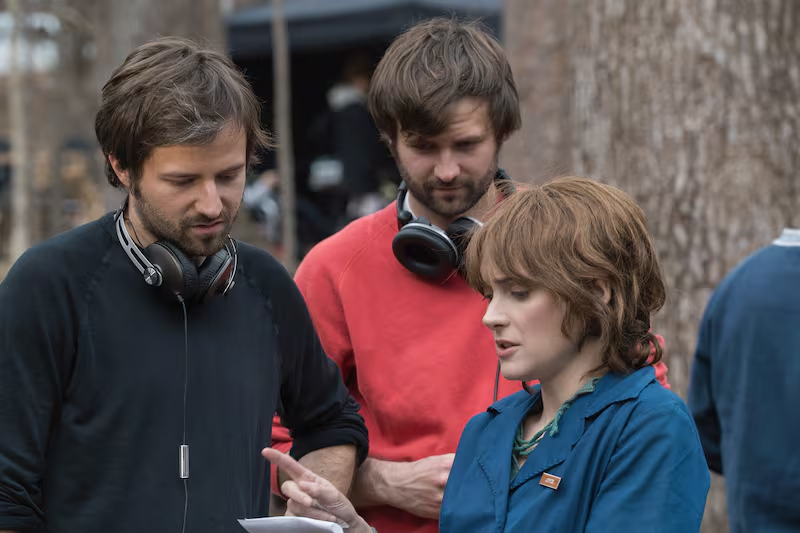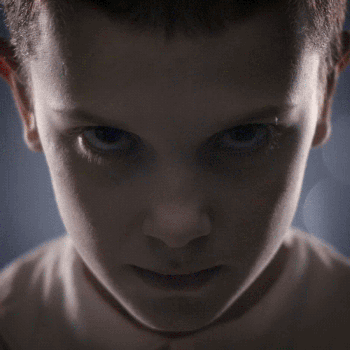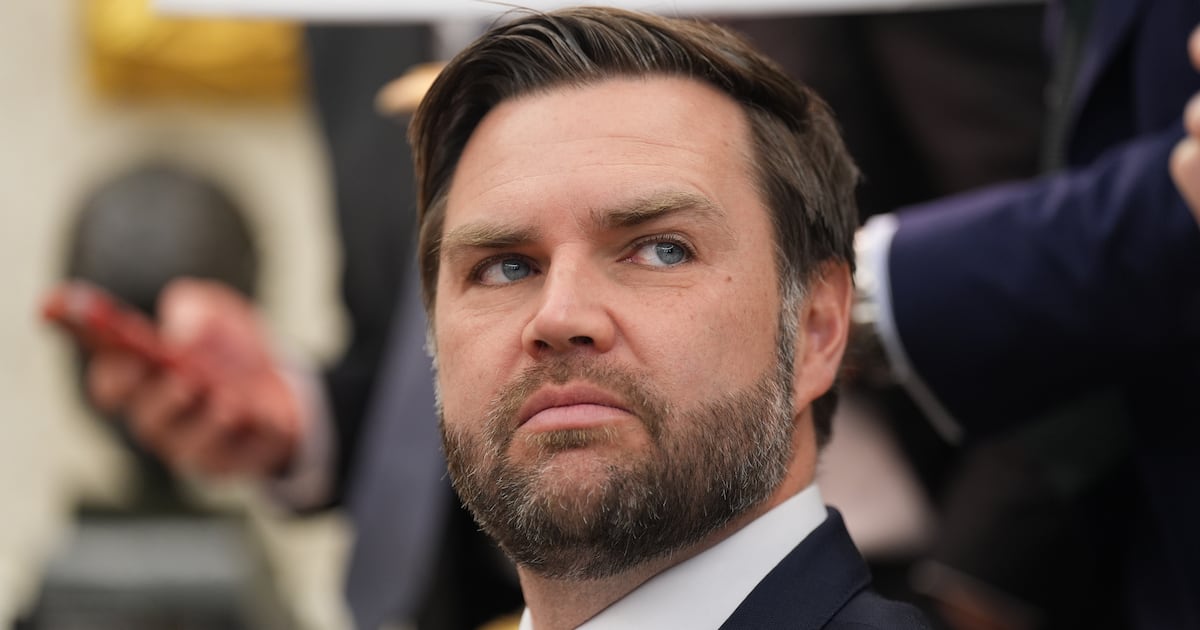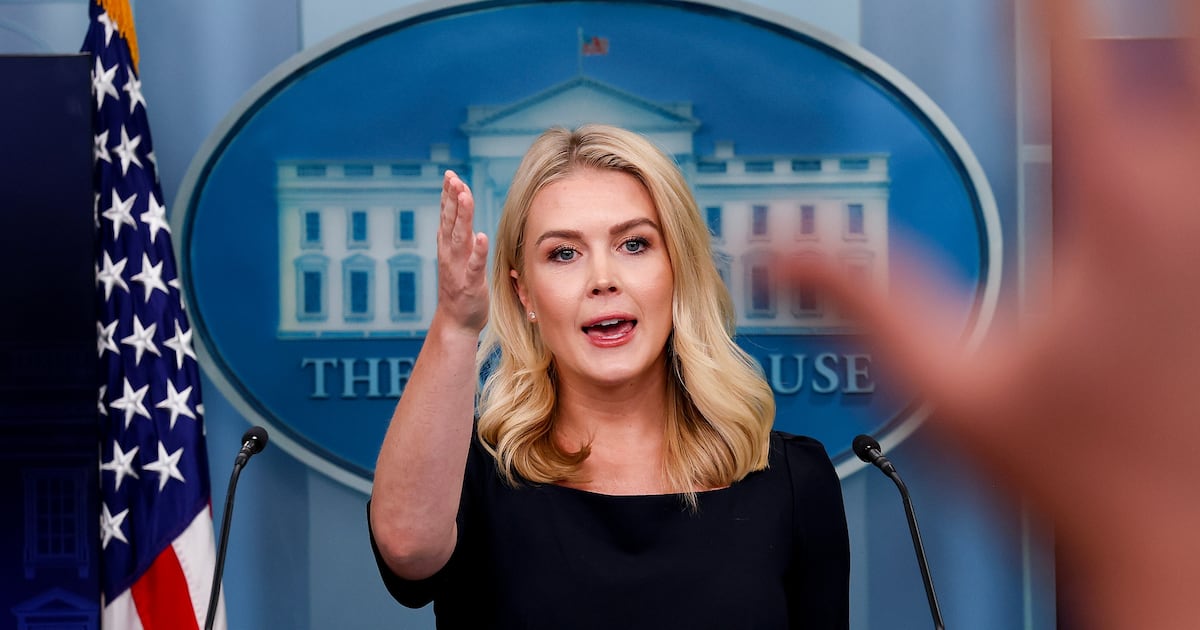Twin brothers Matt and Ross Duffer had only a few scattered credits to their names when they unloaded the sleeper TV hit of the summer, the addictively thrilling supernatural horror Stranger Things. The nostalgia-heavy tale of small-town terror, friendship, and wonder is a warmly familiar tapestry of influences: Stephen King, John Carpenter, and Steven Spielberg weigh as heavily as Alien, Japanese anime, and video games.
At the heart of the show, and pulling each influence together into a gripping, original piece of storytelling, is the Duffers’ infectious enthusiasm for the source material. The 32-year-old North Carolina natives (born a year after their ‘80s story is set) talk up a storm on topics like The Thing or Poltergeist with the same sincere, reverential glee reflected in the show. They’re nerds, basically, in every endearingly cliché sense of the word.
“High school was terrible for us,” laughs Ross, drawing parallels between himself, his brother, and the show’s breakout character: no-nonsense normcore queen Barb. “We both hated it and just felt very much outside the whole time, looking in. Let’s just put it this way: It was not difficult to write the Barb character.”
“Although, we weren’t even friends with people who were in the cool club,” he muses, nose seemingly pressed up on the glass again. “So Barb had us beat on that.” (Same.)
M. Night Shyamalan played mentor to the Duffers on the FOX series Wayward Pines, for which they wrote a few episodes before setting out to make Stranger Things. The show got rejected by “15 to 20” networks, who didn’t think an adult story starring four children would work. Then came Shawn Levy and Dan Cohen, co-executive producers who helped shepherd the project to Netflix.
Levy says he understood Stranger Things’ potential three pages into the script. “You knew you were in for an experience,” he says.
“A lot has been said about our show's style, genre elements, and cinematic references, but what makes the Duffers special is that they service all these things while keeping the show consistently rooted in character. They're also just very sweet, smart guys and they're somehow confident and humble in equal measure, which is rare.”
The Daily Beast talked to the Duffers about how they made the hit of the summer, what to expect in (the yet-to-be-announced) Season 2, video games, the ‘80s, and the show’s terrible, secret alternate titles.
Stranger Things is pretty much the word-of-mouth hit of the summer. What has it been like watching the buzz slowly unfold?
Ross Duffer: It’s surreal. I mean, it’s super fun and just really gratifying. When you’re making the show you’re in a bit of a small bubble. Even with Netflix, you’re only talking to two people over there and we have two other producers, so you have no idea how it’s gonna resonate with the wider world, especially with something like this.
I saw Stephen King tweet about liking the show.
Ross: That fucked us up a little bit.
Matt: In a good way!
Ross: When he first tweeted about it we were about to go to the premiere and I was trying not to cry and just barely functional for the entire duration. Like, it really warped my brain. I think I’m now at the point where it’s sensory overload. (Laughs.) But it’s been absolutely overwhelming, and we absolutely weren’t expecting it.
The “Spot the Reference” game is part of what makes watching the show with friends so much fun. I know you didn't go into the writers’ room like, “OK, here we’re gonna reference E.T., and here Close Encounters,” but how clearly did you want to telegraph each of those influences?
Matt: When we billed the project to Netflix, we had this big two-and-a-half-minute trailer that had about 20 or 30 of these movies kind of woven together to try and tell the story of Stranger Things, but obviously all these images or ideas were in our heads. Those are the movies that we grew up on and they’re so much a part of our DNA. But then when you get into the writers’ room and you’re working on individual episodes, actually very little time is spent referencing other movies. Mostly you’re just trying to tell the story, letting the characters guide where everything’s going. Otherwise it would just be a jumble and a mess. Someone sent me that Vimeo video that had our images side-by-side with [‘70s and ‘80s movies] and some of it was purposeful and some of it was not, which was really cool. And some of it I haven’t even seen.
Ross: The bigger discussions, especially early on, were about how do we capture the feel of these movies? Discussions like, with Poltergeist and Carol Anne with her hand on the static-y TV, talking about why that was so iconic and memorable and why that cuts through and stands out the most in a movie full of great imagery. It’s taking a very ordinary object that people deal with every day, their television set, and imbuing it with something otherworldly. Discussions like that led to, for instance, the Christmas lights. Like, let’s take something very ordinary and then make it really come alive in a very different way.
Matt: Sometimes I see people write about it and they say they like that the show is “self-aware.” And I guess I really didn’t want it to be self-aware. We never wanted to be ironic; we didn’t want to wink at the audience. We wanted it to play like one of those movies would’ve back then, that was sort of the goal. So the hope with the references or whatever is that they don’t pull people out of it. The way we tried to get away with that was being truthful to what the characters would do in their situations and make sure it all makes sense.
You guys play video games too, right?
Matt: How’d you guess? Yes, we do play quite a few video games—have all our lives.
Ross: And obviously there are references in there. That’s the thing: it’s not just ‘80s films that inspired us. There’s a lot of Silent Hill in the Upside Down, which people have noticed.
Have you played The Last of Us? The atmosphere around the entrance to the Upside Down reminded me a lot of some parts in that game.
Ross: Yes! Yes, we have, that’s another one. And The Last of Us is probably, in terms of storytelling, the best story-driven game I’ve ever played. It took a giant leap in terms of character development and how the story was unfolding. But also with the divide and all that, Last of Us I’m sure influenced us.
Matt: Yeah, it was cool, I saw that Neil Druckmann [creative director of Naughty Dog, the developer behind Last of Us] tweeted that he loved the show, which was awesome. It’s great. I’m actually in the middle of playing Uncharted 4 right now.
Nice. Are there images or movies that helped shape Stranger Things that you haven’t seen a lot of people catch onto yet? One I was happy to see somebody point out yesterday was the anime movie Akira.

Ross: Yes, I saw that. Akira was obviously a big one.
Matt: But then weirdly it’s like, I haven't seen it for a long time. More recently I had seen an anime called Elfen Lied that is clearly inspired by Akira. And that was really influential. When I watched it I thought it felt like an ultraviolent E.T. There were a lot of things in there that I really liked and that made their way into the show, particularly related to the character of Eleven.
Tell me about the design of the monster and the Upside Down. Some elements obviously evoked H.R. Giger’s designs for Alien or that creepiness of some Guillermo del Toro designs.
Ross: We’re big fans of Guillermo. In the company Special Motion that built our monster, the dudes who designed it were the ones who do a lot of Guillermo’s stuff. What we were trying to do with our monster is, first of all, we wanted it to be a dude in a suit, which limits you but in a good way. We wanted it to have a simplicity to it, so that if you’re a 12-year-old and you’re watching the show and you get inspired, you could easily sketch this thing out with your markers or crayons or whatever, then you’d show your friends and they’d instantly go, “Oh yeah, that’s the Demogorgon, that’s the monster from Stranger Things.” We wanted it to have a defined silhouette so that it could be recognizable anywhere. Now we’re seeing all this fan art out there on Twitter and it’s fantastic because I’m seeing all these drawings of the monster. That’s really gratifying.
Matt: That may be my favorite thing, the fan art. It is so inspiring. Some of the imagery, I’m like oh wow, that’s really cool. It’s putting stuff in our heads, in a good way. But yeah, we’re kind of still children at heart and so to be able to delve into our own monster was a lot of fun. It was fully animatronic, so all of those—we call them “petals,” the parts that open up—Special Motion designed them in such a way that when the petals move, they never repeat themselves, so it was really creepy that way. It seemed very real. And I should say that the monster was designed by this artist Aaron Sims who is really great, and he and his team actually did all of the effects for the monster. It was sort of his baby and he protected the monster from beginning to end.
There’s this one moment in the show where the science teacher is watching The Thing and explains that the gooey flesh from a head that’s falling off is actually melted bubble gum—did you guys ever consider going full-‘80s and using some of those old, ingenious practical effects instead of sometimes resorting to visual effects?
Ross: The funny thing is that the original goal was to do entirely practical effects. But what we realized—and it really made us admire those guys who did The Thing and Alien and whatever—is that doing practical is really hard. It takes a lot of time and preparation. We were turning out scripts as quickly as we could but they don't have six months to prep this stuff. You show up on set and stuff that seemed like it would be a great idea to do in that old school way, we didn't have time to do. It takes a lot of trial and error, so that was a lesson learned. At one point we tried to have the monster break through a wall practically and it just…
Oh, that must have looked…
Ross: It looked ridiculous.
Matt: It looked terrible.
Ross: (Laughs.) If anyone saw the test footage, they would be rolling on the floor laughing. So it was just us going, “OK. Some of this we’re gonna have to just do with visual effects.” But I think it’s something that, for example, J.J. Abrams does a pretty brilliant job of. Like in the new Star Wars, he used a mix of both practical and visual effects and it’s as seamless as possible. So for something like the lab, most of the vines and all that stuff throbbing and coming out of the hole, that’s all production design. We built all that. But then where we needed to do stuff that we didn't have the time to figure out how to do practically, that becomes visual effects. It was a bit of 50-50 in the end. But I mean, those guys in The Thing, not only does that stuff hold up, it looks real. There’s something tangible about it and it’s not an easy thing to do, so those guys are our heroes.

How much more about the extra-mysterious elements of the show, like the Upside Down or the government lab, do you want to reveal over the course of a potential second or third season? It must be a hard line to toe because the less you know, the scarier it is.
Matt: Yeah, and we’re figuring it out now. We have a 30-page document that answers all the questions we have about the Upside Down. I think it was important to us and important going forward that we’re experiencing all this through the point of view of our characters. There’s a lot that they don’t understand and for us, this stuff it’s scarier when you don’t fully understand it. The more that you reveal and the more you comprehend, the less scary it gets. That’s sort of the H.P. Lovecraft, Clive Barker approach. Or like Stephen King: It is so weird, and the weirdness actually makes it scarier, because if you were to encounter some inter-dimensional being, it would be beyond comprehension. So we want to explain, we want to reveal more of it, we want characters and the audience to understand more about it, but you’ll never understand everything.
Ross: There’ll always be something a little otherworldly about it, but the plan in that second season is to get into more of those questions, like why there was only one monster and what the Upside Down is exactly. We have all those answers and didn’t feel like they were necessary to answer this season. But the hope is that by the end, people will still have some questions, but that it will also feel satisfying as a whole. We have all this mythology and we’re just gonna dole it out a little bit at a time. We could have a scientist sit down and explain it all, but that’s not very much fun.
I liked that the movies you reference set up certain expectations that mess with you while watching the show. I kept waiting to hate Steve, who looks and sounds like every douchebag ‘80s boyfriend ever—and then he turns out OK at the end.
Matt: Yeah! And this is what’s so fun about television, even though we think of this as a big movie: movies aren’t eight hours long. You’re able to change things up a little bit. Steve initially was a stereotypical douchebag. He was a trope. And then a couple things happened and we found Joe Keery, this actor who didn’t really fit our vision for Steve. But we just fell in love with this guy and wanted him in the show and kind of tailored the show for him. He was so charming and likable even when he was being a douchebag, we decided we would give him an arc. And it’s also very boring if you have a character who is a douchebag for seven hours. As you’re writing it, you want things to evolve. You want characters like that to grow.
Ross: If this were a two-hour movie, he’d have stayed a douchebag at the end. So I think part of it is, by the nature of television, we end up upending these references. And sometimes you play into it. Like, “Why is Nancy going into the hall?” You want the audience screaming at her like, “Are you crazy?!” I love playing into those horror tropes of “don’t go into the basement, you idiot.” I love that, so it’s fun to sometimes play into it and sometimes against type and the tropes.
Matt: I’m still a movie lover at heart, but after you’ve seen so many movies they become very predictable in a way, where you know exactly where they’re going. And in television now, and I’m talking specifically about the great shows, they can really surprise you. Like George R.R. Martin colors way outside the lines and so you’re always a little bit on edge and you don’t know what to expect. There’s a complexity to it and it’s surprising, so we wanted the show to have some of that in it.
And then there’s Barb. So many people see themselves in her, I think especially the nerdy people who weren’t the ones everyone wanted to date in high school. Did all the outpouring of love for her from fans surprise you? Do you guys see yourselves in her, too?
Ross: We absolutely do. I mean, high school was terrible for us. (Laughs.) We hated it and we just felt very much outside the whole time, looking in. Let’s just put it this way: It was not difficult to write the Barb character. Although, we weren’t even friends with people who were in the cool club. So Barb had us beat on that.
Matt: Yeah, like I never even got invited to that party. That didn’t even happen.
Ross: We were, like, less cool than Barb. I think a lot of people do feel like that and in terms of the response, we were both surprised and not surprised. Everyone on both the production and Netflix side have long been obsessed with Barb, particularly once we cast Shannon [Purser] who just crushed it. We were always talking about Barb and “what about Barb” and “poor Barb”—we talked about it in the writers’ room almost every day. So it’s great to see that people responded in that way. It’s so weird that people are using the phrases that we used in the room like a year ago. I think part of it is that usually in these horror movies, it’s these very popular girls who take their tops off who get taken. And so there’s something particularly tragic about the loner character getting snatched and not making it out of the Upside Down.
Matt: In the original pilot script, Barb got taken at the end of the episode, so it was both Benny and Barb that were killed. And I think what we were trying to do was set up a world where no one was safe and it’s not just the assholes and the people who are behaving poorly that get taken. Like in Stand By Me, I always feel like they’re in danger; I never feel like they’re safe, even when I rewatch it for the sixth time. It was important for us to keep that danger alive: even though these kids are cute and lovable, it did not mean that the show will keep them safe. That’s why we immediately wanted to knock off some characters that hopefully people would fall in love with.
One criticism of the show I’ve seen is that it has a “limited view on women,” in that with the exception of Eleven and sometimes Nancy, female characters don’t get a lot of personal depth outside of their connection to the boys. Is that something you guys are hoping to expand on in a potential second season?
Matt: Yeah, I mean, sure absolutely. My thing is that I would say what we were trying to do with this season is give all of our female characters both a strong drive and give them badass moments. To me, we have Eleven and Joyce who are taking action on their own and being very strong. So that was something that was very important to us and we would do well to keep doing moving forward.
The show has also earned pretty much universal praise for its casting. You’ve got Winona Ryder, a face familiar from the ‘80s, David Harbour, and these incredible, instantly lovable kids. How hard was it finding them?
Matt: Everyone recognized really early on that if we had even one kid who wasn’t good, it would take the whole ship down. So we just started looking really, really early on. At that point, we just had the pilot script and we had so little material that we were actually having them audition with scenes from Stand By Me. And then we found four kids that we just fell in love with. Some of them matched the characters in the script and some of them didn’t, really. Like Dustin, I don’t think we really understood who that character was. He started out more like a stereotypical nerd and then we met Gaten and we basically tailored the show to him.
Ben is another example of someone who wasn’t exactly like Mike in the original script. Originally Mike was a sigher, he was a dreamer, he was much more like Mikey in The Goonies in a lot of ways. But Ben had this really anxious, twitchy energy about him and we thought that that was really great and we just kind of wrote the character to match him and his personality.
The same thing with Joe Keery, who plays Steve. A lot of these actors that we cast made us write more interesting, more three-dimensional characters for them. The show is so much better because of these actors. That’s one of the cool things I love about television, is it’s able to evolve and able to adapt and the actors and the performers are actually a more integral part of the process. So they’re informing not just the characters, but the story. I don’t think the story would have gone in the same direction that it did were it not for these characters that we had.
And then David is just someone who I think has been waiting too long for this opportunity. He is such an amazing actor and he just hasn’t been given the platform, that’s all. So it was exciting for us to go, OK well let’s give it to this guy. We knew he was gonna knock it out of the park. I love him so much. He’s such a badass.
I’m not sure if you guys have ever talked about this before, but how did you settle on the title Stranger Things? I know originally it was Montauk.
Matt: Yeah, that was like a whooole set of—I mean that was a very painful… (Laughs.) It’s very hard when your brain is latched onto a title, it’s really, really hard to get people to agree and accept another title. Initially when we came up with this title Stranger Things it was hard for people to embrace. It’s actually taken like a full year for people to get used to it. But now, no one can think of it being called Montauk.
Ross: We kept wanting to kick that can down the road and we didn’t wanna settle on a title and at some point [Netflix head] Ted Sarandos was like, “You gotta just do something and we’re all gonna end up loving it and get used to it.” And we were like, “Nooo! We don’t want to!” But he was absolutely right. Another big thing for us and, I know people love the font and have been talking about the title design, but we were testing these titles in the font and seeing what felt right in a weird way. It was really design-oriented.
Matt: When we were selling it, we made a fake Stephen King paperback cover for the show. We actually used the Firestarter paperback and put our title and an image of a fallen bike on top of it, so when we were trying to come up with titles, we would type them out onto this paperback cover and it would help us. And Stranger Things sort of sounds like Needful Things—it sounded like it could have been a Stephen King book from the ‘80s. But there were a lot of heated arguments about it. (Laughs.) Actually, someone sent me the list—I hope this never, ever comes out on the internet—the list of alternate titles for the show. I was like: if you leak this, I will kill you. It is so embarrassing.
Well now I know what my next question is. Pony up.
Matt: Yeah, I can’t—I just don’t… I’m not gonna do it. They’re not good, just rest assured they’re not good. People would be making fun of them endlessly. And that’s the thing! When you’re working on a show like this, there are a lot of really bad ideas. Everyone has bad ideas, I have bad ideas, everyone has terrible ideas. I’m sure people would love to see that list, but I’m gonna make sure that never gets out.






